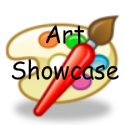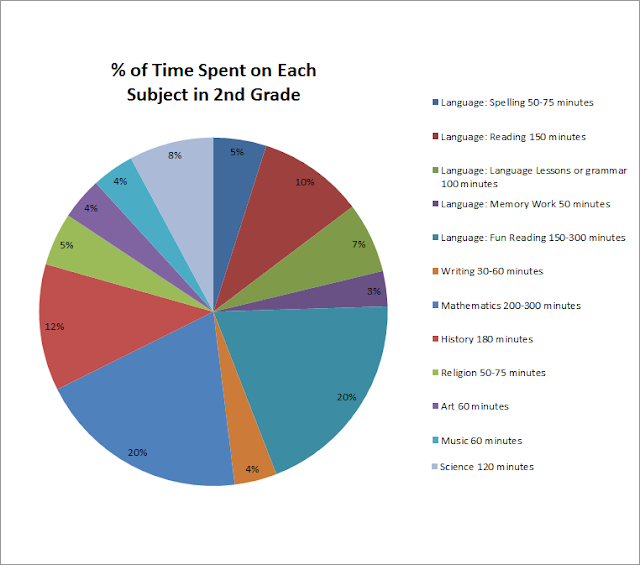I have heard lots of references to the book, The Well Trained Mind by Susan Wise Bauer and Jessie Wise , but I was not exactly sure what the program entailed, so I checked out the book from the library. As it turns out The Well Trained Mind
, but I was not exactly sure what the program entailed, so I checked out the book from the library. As it turns out The Well Trained Mind  is a suggested course of study for homeschooling students who want a classical education focusing on reading and writing. In fact, the program is super writing intensive with a lot of Latin sprinkled in and a dash of science and math. History is incorporated into all the reading and writing.
is a suggested course of study for homeschooling students who want a classical education focusing on reading and writing. In fact, the program is super writing intensive with a lot of Latin sprinkled in and a dash of science and math. History is incorporated into all the reading and writing. The program segregates education into three blocks. The first stage is the grammar stage where student learn facts; lots of facts. The grammar stage covers 1st-4th grade. The second stage is the logic stage where students learn cause and effect and begin to discover why things occur. The logic stage covers grades 5th-8th grade. The last stage is the rhetoric stage where students learn to combine the knowledge gathered in the first two phases of education to purse their chosen disciplines. In the high school years is where a student can specialize in various topics.
History is uniquely broken up within the three blocks of education. In the first year of a block, a student studies ancient history covering 5000 B.C.-A.D. 400. The second year within a block student study medieval history through early Renaissance history 400-1600. In the third year of a block, a student studies late Renaissance history to early modern history from 1850-present. This means that a student will study the same period in history three times.
Likewise science is broken up within the three blocks of education as well. In the first year of a block, a student studies biology. In the second year of a block a student studies earth science and astronomy except in high school when only astronomy is covered. The third year in a block is spent studying chemistry. The last year in a block is spent studying physics and in high school physics and computers is studied. The logic behind studying science in this order is that the rapid growth of these respective fields corresponds to the blocks in history noted above.
Up until this point the program seems feasible. However, The Well Trained Mind  is a big book that covers a lot of information. There are curriculum reviews and recommendations, schedules, lists of important people, and teaching methods. When you first read the book, the program will seem overwhelming because the authors cover education from the preschool years through high school which is a lot of education to cover in one book.
is a big book that covers a lot of information. There are curriculum reviews and recommendations, schedules, lists of important people, and teaching methods. When you first read the book, the program will seem overwhelming because the authors cover education from the preschool years through high school which is a lot of education to cover in one book. I found the schedules in The Well Trained Mind  very tedious because I like numbers and visuals and the schedules were tediously written out with detailed directions. I can quickly understand a program better when I see what percentage of my time will be spent on each subject. I also wanted to see the schedules lined up in charts so I can quickly see the progression of education through time. Below I have made pie charts for each grade level for the amount of time spent on a subject. I hope these charts can help another overwhelmed parent visualize the program quickly. The schedules often contain a range of time that a subject should be covered, but to make my charts consistent I always used the maximum amount of time used in the ranges.
very tedious because I like numbers and visuals and the schedules were tediously written out with detailed directions. I can quickly understand a program better when I see what percentage of my time will be spent on each subject. I also wanted to see the schedules lined up in charts so I can quickly see the progression of education through time. Below I have made pie charts for each grade level for the amount of time spent on a subject. I hope these charts can help another overwhelmed parent visualize the program quickly. The schedules often contain a range of time that a subject should be covered, but to make my charts consistent I always used the maximum amount of time used in the ranges.
My charts lack the detail that the book offers, so if you are curious to learn about the program and curriculum recommendations, then please read the book.
After reading the book The Well Trained Mind  and looking at my charts, I am apprehensive to follow this program exactly. Many people criticize the program because it does not focus on the creative spirit of a child, however, my criticism of the program stems from the fact that math and science seem to take a back burner in this course of study. According to Fox Business, the top ten jobs of the future are going to be genetic counselor, organic farmer, medical records administrator, mobile application developer, robotics technician, stimulation engineer, social media manager, stem cell researcher, and sustainability officer. Looking at these jobs all of them have a heavy focus on math, science, or technology (even organic farmers need to have a good running knowledge of science in order to implement new technologies in the field.) Under The Well Trained Mind
and looking at my charts, I am apprehensive to follow this program exactly. Many people criticize the program because it does not focus on the creative spirit of a child, however, my criticism of the program stems from the fact that math and science seem to take a back burner in this course of study. According to Fox Business, the top ten jobs of the future are going to be genetic counselor, organic farmer, medical records administrator, mobile application developer, robotics technician, stimulation engineer, social media manager, stem cell researcher, and sustainability officer. Looking at these jobs all of them have a heavy focus on math, science, or technology (even organic farmers need to have a good running knowledge of science in order to implement new technologies in the field.) Under The Well Trained Mind  schedules your student will be focusing a lot on reading, writing, and Latin. While reading and writing are excellent foundations to learn science in the early years, more focus needs to be placed on skills that are going to be needed in the future.
schedules your student will be focusing a lot on reading, writing, and Latin. While reading and writing are excellent foundations to learn science in the early years, more focus needs to be placed on skills that are going to be needed in the future. As a homeschooling parent, your job is to prepare your child for the real world and provide them with skills that are necessary to thrive in the structure of our current society. Some student may have no interest in science and math, so they are going to have a natural propensity towards the humanities and this is fine since we need excellent writes to communicate stories of our times or social workers who can work towards ensuring that all children grow up in a safe home. Under these circumstances The Well Trained Mind  schedules are excellent. However, if you child has a gift or natural interest in science and math, then you are doing your child a disservice by choosing to place math and science on the back burner. In my humble opinion, I would scale back the study of Latin and add more science. In particular I would combine astronomy and chemistry into 10th grade and spend more time on those subjects. Then I would move physics to 11th grade. For a student who is particularly gifted in science I would add a second year of biology to 11th grade or for student with more average interested in science I would add a second biology course to 12th grade. For a student with a lot of interest in science I would add either a second study of chemistry or physics in 12th grade. Biology is probably the most rapidly changing field in science right now. The reality is that we are only beginning to understand the living world around us. Of the top ten jobs listed above four require a strong biology background: genetic counselor, organic farmer, stem cell researcher, and sustainability officer. Biology is easier to understand once a student has a good fundamental understanding of chemistry. This is why I suggest adding a second year of biology to high school after chemistry has been fully studied at the high school level. List below are my recommendations for a revised science schedule and an accelerated revised science schedule.
schedules are excellent. However, if you child has a gift or natural interest in science and math, then you are doing your child a disservice by choosing to place math and science on the back burner. In my humble opinion, I would scale back the study of Latin and add more science. In particular I would combine astronomy and chemistry into 10th grade and spend more time on those subjects. Then I would move physics to 11th grade. For a student who is particularly gifted in science I would add a second year of biology to 11th grade or for student with more average interested in science I would add a second biology course to 12th grade. For a student with a lot of interest in science I would add either a second study of chemistry or physics in 12th grade. Biology is probably the most rapidly changing field in science right now. The reality is that we are only beginning to understand the living world around us. Of the top ten jobs listed above four require a strong biology background: genetic counselor, organic farmer, stem cell researcher, and sustainability officer. Biology is easier to understand once a student has a good fundamental understanding of chemistry. This is why I suggest adding a second year of biology to high school after chemistry has been fully studied at the high school level. List below are my recommendations for a revised science schedule and an accelerated revised science schedule. Revised Science Schedule
9th grade: biology
10th grade: astronomy and chemistry
11th grade: physics
12th grade: biology
Accelerated Revised Schedule
9th grade: biology
10th grade: astronomy and chemistry
11th grade: physics and biology
12th grade: chemistry or physics
The second dose of biology, chemistry, or physics should prepare a homeschooling student to take the AP (advanced placement) exam. Taking an AP exam will show prospective colleges that your child is capable and ready for college level work. Likewise, I have adjusted the amount of time spent on science within the schedule charts below.
A second change that I would make to the curriculum is to add a systems thinking class in 9th grade and again cut down on the Latin. Our world is not a simple cause and effect relationship; instead our world is complex full of intertwined relationships that all affect one another. In order to prepare our children for a complex environment, I think a class in systems thinking would be beneficial since the student already has an excellent understanding of logic. Systems thinking will allow students to understand science in history in a whole new way. Systems thinking is the next step after logic and will prepare a child who wants to purse any career path. Listed below are my updated schedule charts.




I think if you are considering a classical education for your child, then you need to read The Well Trained Mind by Susan Wise Bauer and Jessie Wise . The book is thought provoking, meticulous, and detailed. It lays out a solid education for student who wants to pursue the humanities. For a student who wants to pursue a career in science or medicine, then I think an alternative schedule should be followed, but The Well Trained Mind
. The book is thought provoking, meticulous, and detailed. It lays out a solid education for student who wants to pursue the humanities. For a student who wants to pursue a career in science or medicine, then I think an alternative schedule should be followed, but The Well Trained Mind  provides a solid foundation for anyone to begin planning their homeschooling education.
provides a solid foundation for anyone to begin planning their homeschooling education.









 . The book had pretty bright pictures and a story line that just had a nice rhythm to it when you read it out loud. The book didn’t go into any technical details but instead just made light of different characteristics of sea life. We decided to make our ocean. We made a clam, crab, dolphin, fish, and a jellyfish. This was a perfect preschool book.
. The book had pretty bright pictures and a story line that just had a nice rhythm to it when you read it out loud. The book didn’t go into any technical details but instead just made light of different characteristics of sea life. We decided to make our ocean. We made a clam, crab, dolphin, fish, and a jellyfish. This was a perfect preschool book.









 .
.  which breaks Aesop’s fables into two speaking voices. I take one voice and Little BBQ takes the other. Little BBQ has been struggling with lying this week. He lied to us about taking pretzels into the living room (we do not allow food outside of the kitchen) and one of Aesop’s fables is about the boy who cried wolf. Little BBQ does not seem to understand what is wrong with lying. He knows that he will get in trouble for taking the pretzels in the living room, so he just tells us that it wasn’t him. Thankfully, he isn’t trying to blame someone else or his little sister for taking the pretzels into the living room.
which breaks Aesop’s fables into two speaking voices. I take one voice and Little BBQ takes the other. Little BBQ has been struggling with lying this week. He lied to us about taking pretzels into the living room (we do not allow food outside of the kitchen) and one of Aesop’s fables is about the boy who cried wolf. Little BBQ does not seem to understand what is wrong with lying. He knows that he will get in trouble for taking the pretzels in the living room, so he just tells us that it wasn’t him. Thankfully, he isn’t trying to blame someone else or his little sister for taking the pretzels into the living room.






















